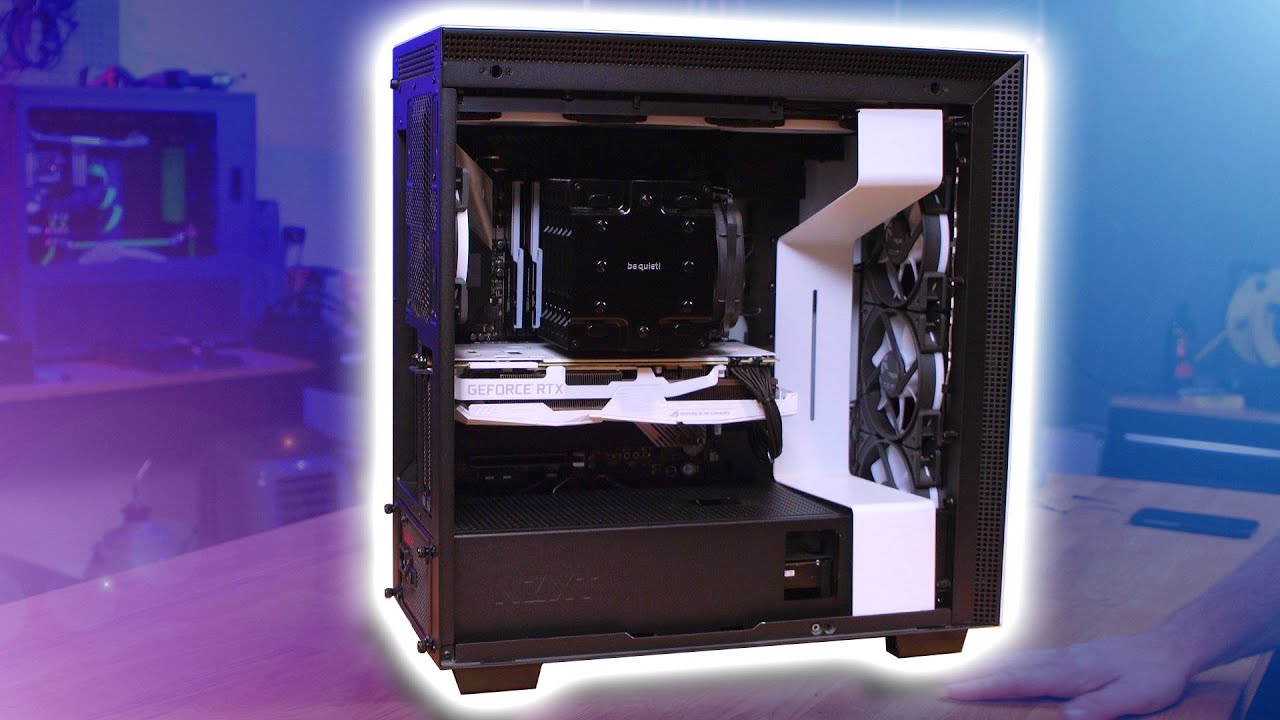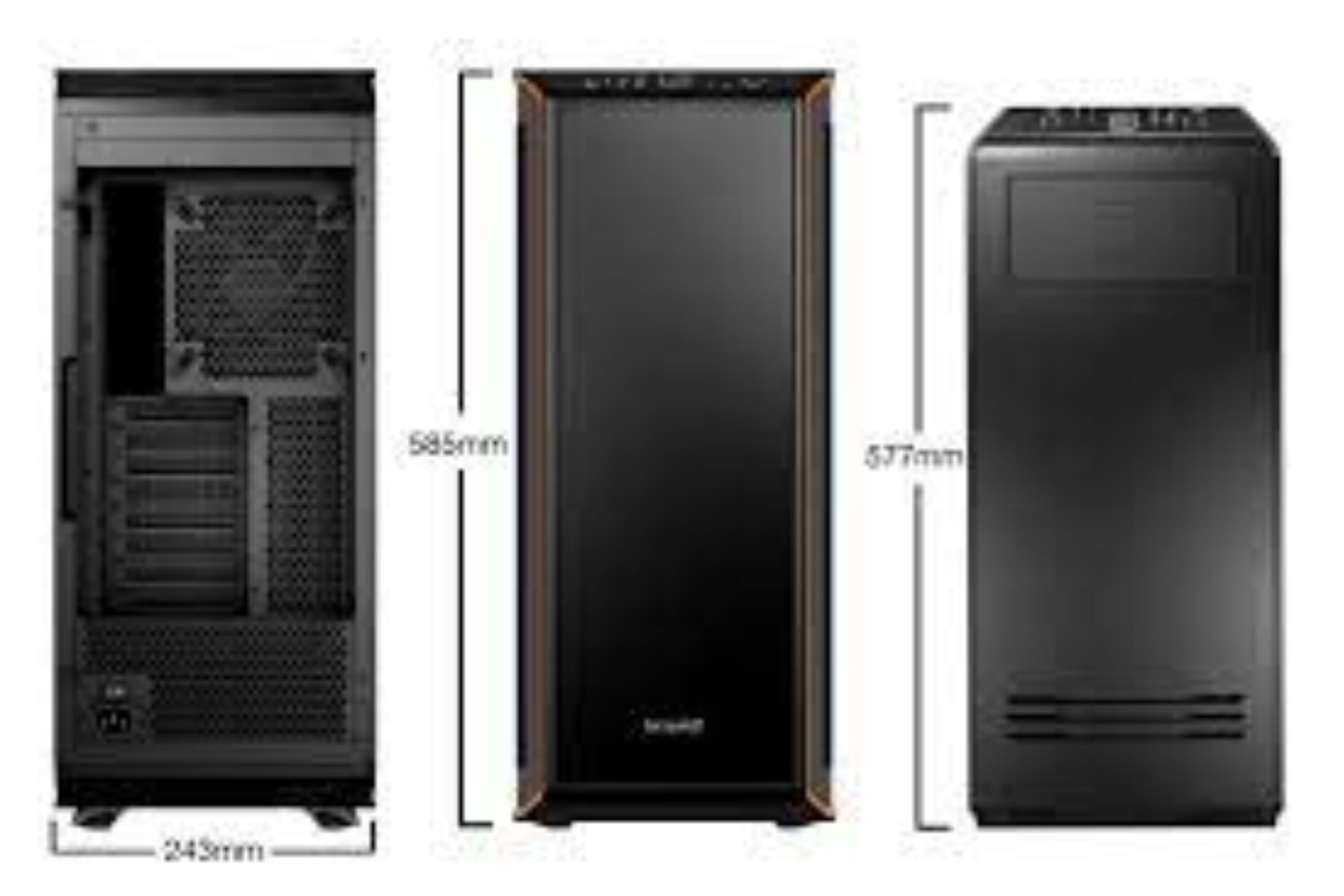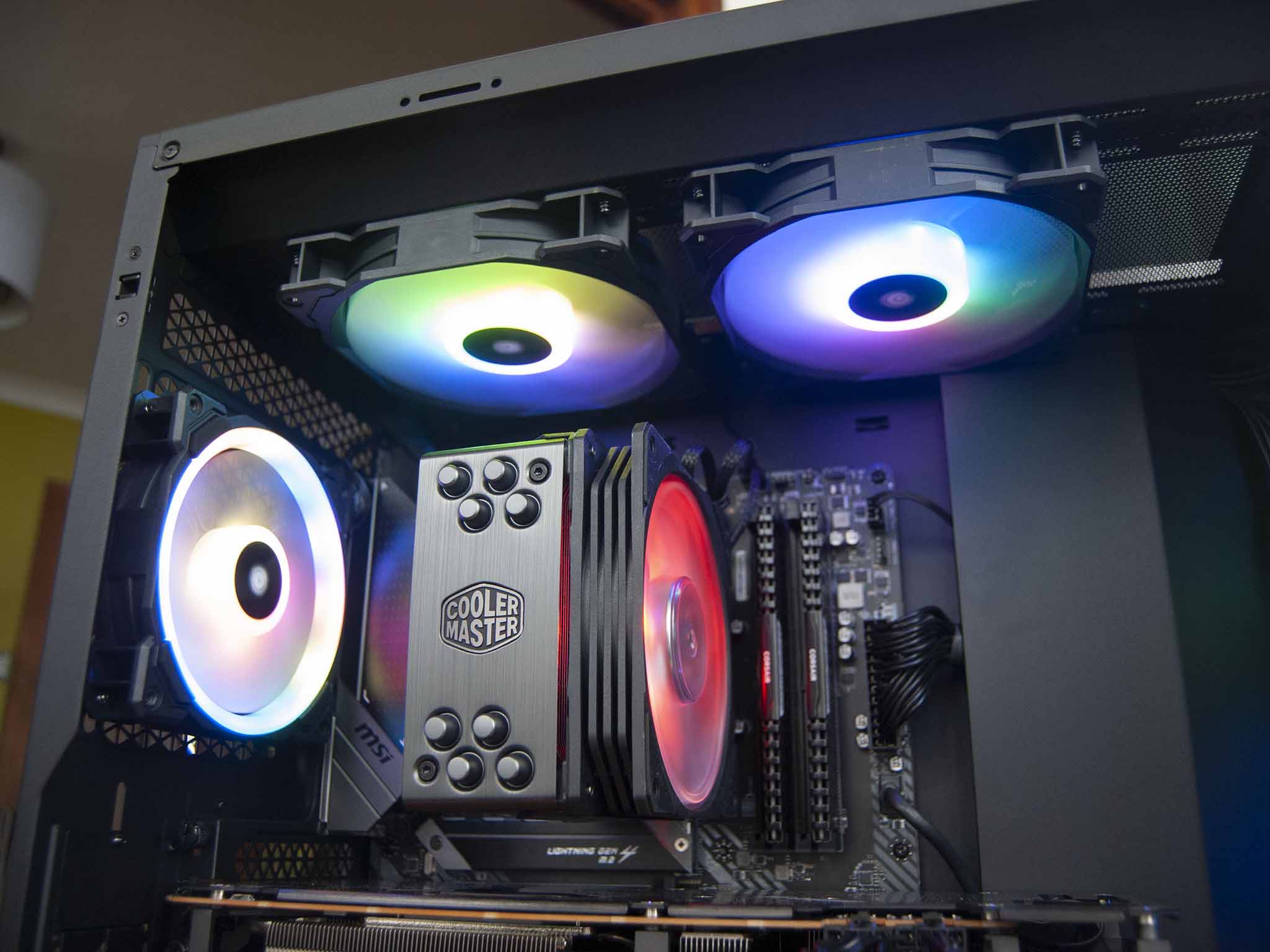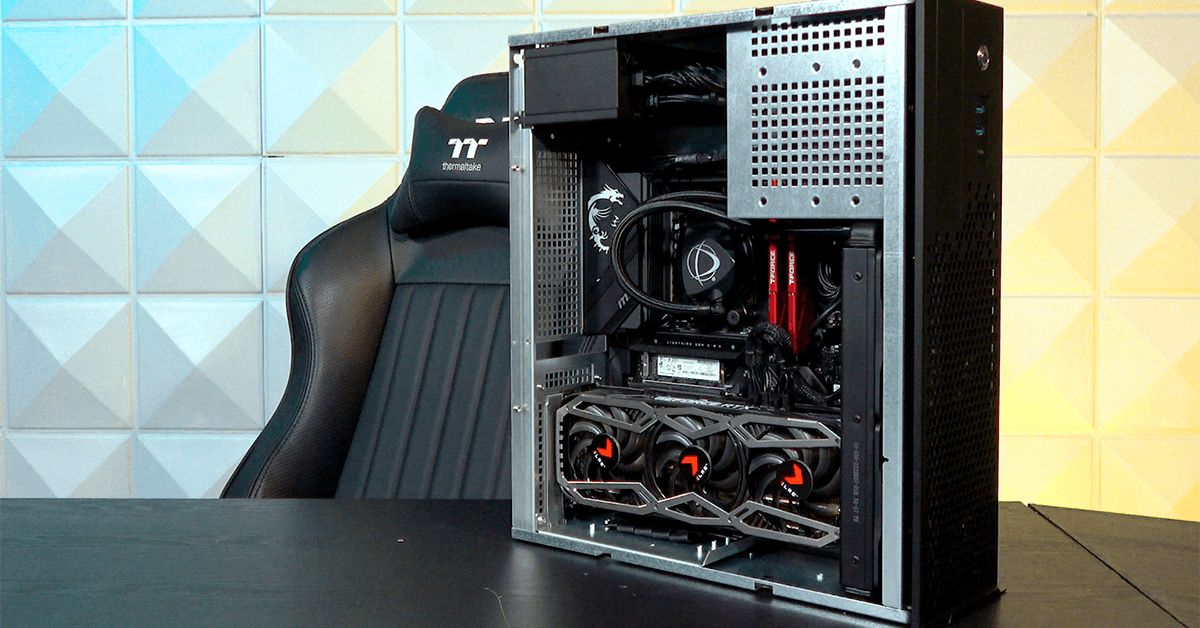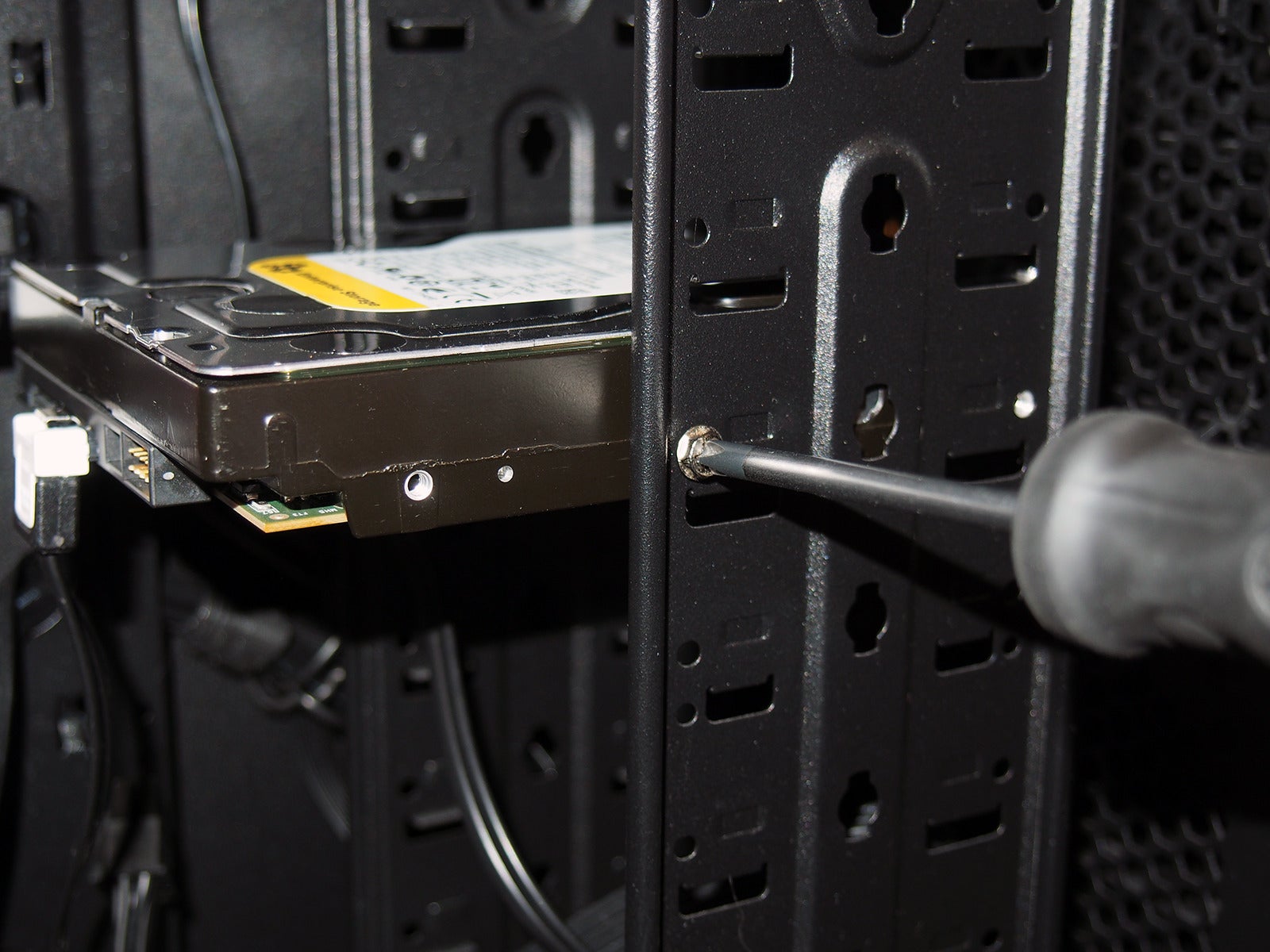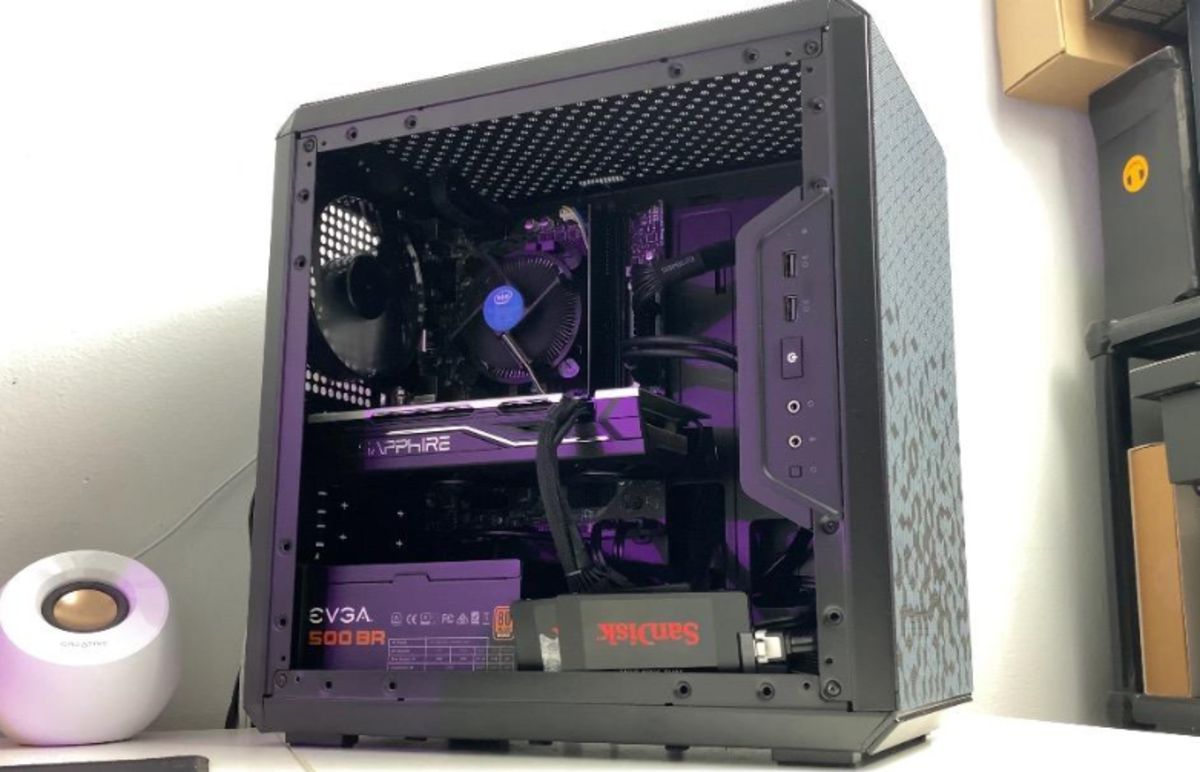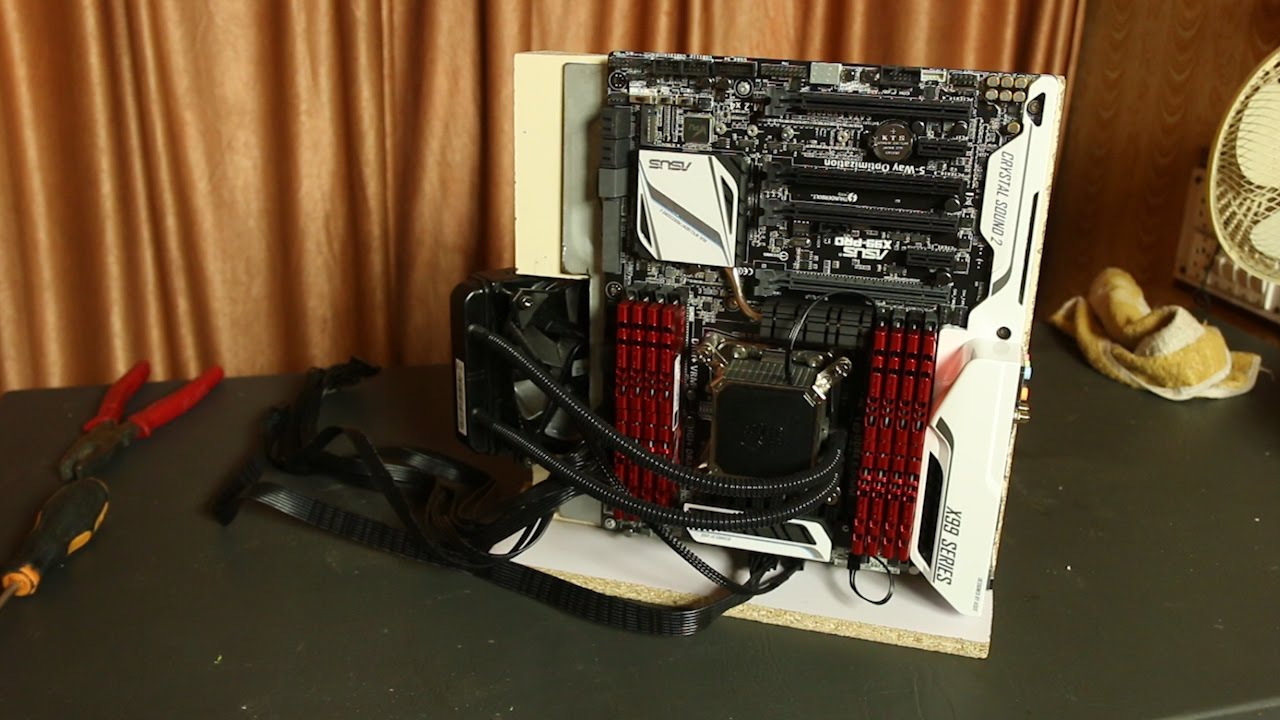Introduction
Having a well-managed cable system in your PC case is more important than you might think. Not only does it contribute to a clean and organized appearance, but it also improves airflow, reduces the risk of tangling or damaging cables, and makes it easier to troubleshoot and upgrade components.
Imagine opening your PC case and being greeted by a tangled mess of wires. It can be overwhelming and frustrating, especially if you need to access a specific cable or make changes to your hardware. Additionally, a cluttered cable management can obstruct proper airflow, leading to higher temperatures and potentially affecting the performance of your components.
Fortunately, with the right tools and a systematic approach, managing the cables in your PC case can be a straightforward and rewarding process. This article will guide you through the step-by-step process of effectively organizing and securing your cables.
Before we delve into the details, let’s take a look at the tools and materials you’ll need for the task. It’s important to ensure you have everything ready before you begin, as this will help streamline the process and prevent any unnecessary delays.
Why Cable Management is Important
Proper cable management is not just about aesthetics; it plays a crucial role in the overall functionality of your PC. Here are a few key reasons why cable management should not be overlooked:
- Improved Airflow: When cables are neatly organized and tucked away, it allows for better airflow within the PC case. Unobstructed airflow helps prevent heat buildup, ensuring that your components stay cool and perform optimally. This can result in better system stability and longevity.
- Easier Troubleshooting: An organized cable system makes troubleshooting and diagnosing issues much simpler. When cables are neatly labeled and organized, it’s easier to identify and trace specific cables, making it quicker to identify and resolve any connectivity or hardware issues that may arise.
- Enhanced Upgradability: As technology evolves, it’s inevitable that you’ll need to upgrade or replace components in your PC. Having a well-managed cable system makes the process of adding or swapping out hardware much easier. With clearly-routed and labeled cables, you can effortlessly access and disconnect specific cables without disrupting the entire system.
- Reduced Risk of Damage: Tangled and loose cables not only look messy but also pose a higher risk of damage. Cables that are left hanging or piled up can get snagged, pulled, or tripped over, posing a risk to both the cables themselves and the components they are connected to. Proper cable management eliminates these hazards and protects your investment.
By investing time in managing your cables properly, you can reap these benefits for the long term. Now that we understand the importance of cable management, let’s move on to the tools and materials you’ll need to get started.
Tools and Materials Needed
Before you embark on your cable management journey, it’s essential to gather the necessary tools and materials. Here’s a list of items that will come in handy:
- Cable Ties: These small plastic or Velcro straps are designed to hold cables together and keep them organized. Opt for reusable Velcro ties for added convenience.
- Cable Clips or Clamps: These are small adhesive-backed clips or clamps that can be attached to the surface of your PC case. They help keep cables in place and prevent them from dangling or obstructing airflow.
- Cable Sleeves or Sleeved Extensions: If you want to achieve a clean and streamlined look, cable sleeves or sleeved extensions can help give your cables a uniform appearance. They come in various colors and materials to suit your aesthetic preferences.
- Cable Management Channels or Raceways: These are plastic or metal channels that can be attached inside your PC case to neatly route and hide cables. They provide a dedicated space for cable organization and also enhance airflow.
- Labeling Materials: Consider using small adhesive labels or cable tags to identify each cable. Labeling helps during troubleshooting or future upgrades, ensuring you can easily identify the purpose or destination of each cable.
- Cable Combs: Cable combs are small, rigid plastic pieces that help align and straighten individual cables, giving them a professional and organized appearance.
- Zip Ties or Twist Ties: While reusable cable ties are preferable, having a few zip ties or twist ties on hand can be useful for temporarily securing cables during the cable management process.
- Screwdriver: Depending on your PC case, you may need a screwdriver to remove or reposition components, allowing easier access to cables.
Having these tools and materials readily available will make the process of managing your cables much smoother and efficient. Once you have everything prepared, it’s time to move on to the step-by-step process of cable management.
Step 1: Planning
Before you start organizing your cables, it’s important to have a clear plan in mind. Take a moment to assess your PC case and visualize how you want your cables to be routed and organized. Consider the following:
- Component Placement: Take note of where your motherboard, power supply, storage drives, and other components are located in your PC case. This will help you determine the most efficient routes for your cables.
- Cable Length: Measure the length of your cables and consider how much excess cable you’ll need to manage. This will help you decide where to bundle and secure the excess length.
- Airflow Optimization: Plan for proper airflow by identifying areas where cables may potentially obstruct the path of airflow. Ensure that cables are routed in a way that allows for unobstructed ventilation.
- Accessibility: Consider ease of access for future upgrades or maintenance. Plan the cable routing in a way that allows you to easily connect or disconnect cables without disassembling the entire system.
- Labeling: Decide if you want to label your cables for easier identification in the future. Determine the labeling method you will use and how you will attach the labels.
By taking the time to plan before diving into the physical cable management process, you’ll have a clear direction and minimize the potential for mistakes or rework. Once you’ve finalized your plan, you’re ready to move on to the next step: organizing your cables.
Step 2: Organizing Cables
With your plan in place, it’s time to start organizing your cables. Here are some tips to help you achieve a clean and organized cable system:
- Separate Cables: Begin by separating the different types of cables, such as power cables, data cables, and fan cables. This will make it easier to manage and route them individually.
- Route Cables Strategically: Consider the shortest and most direct paths for each cable. Route cables away from areas where they may impede airflow or interfere with other components.
- Group Cables by Category: Bundle related cables together using cable ties or Velcro straps. For example, group all your SATA cables or USB cables together for a more organized appearance.
- Use Cable Management Channels: If your PC case has built-in cable management channels or raceways, utilize them to route the cables neatly. This helps to hide the cables from view and provides a cleaner look.
- Avoid Overstuffing: Be mindful of not overstuffing cables into tight spaces. Leave some room for flexibility, as this will make it easier to access and modify cables in the future if needed.
- Consider Cable Length: Arrange cables in a way that minimizes excess length when connecting components. Avoid unnecessary loops or tangles by neatly arranging and securing the cables.
Remember, the goal is to achieve a well-organized and visually appealing cable system that also promotes airflow and ease of maintenance. Take your time during this step to ensure that each cable is neatly positioned and secured. Once you have organized your cables, it’s time to move on to bundling the cables together in the next step.
Step 3: Bundling Cables
Now that your cables are organized, it’s time to bundle them together to keep them neat and secure. Here’s how you can effectively bundle your cables:
- Group Cables by Function: Start by grouping cables with a similar function, such as power cables or data cables. This will make it easier to manage and identify specific cables later on.
- Use Cable Ties or Velcro Straps: Bundle the grouped cables together using cable ties or Velcro straps. Make sure not to overtighten the ties, as this could damage the cables or make it difficult to make adjustments in the future.
- Leave Room for Flexibility: When bundling cables together, ensure that you leave some slack or wiggle room. This will allow for flexibility and adjustments if you need to reposition or add cables in the future.
- Arrange Cables Neatly: Arrange the bundled groups of cables in a clean and organized manner. You can use cable management channels or raceways to keep the bundles together and prevent them from shifting or tangling.
- Consider Cable Length: Adjust the length of each bundled cable to minimize excess length. Trim any excess cable ties if needed, but be careful not to cut into the actual cables.
By bundling your cables, you’ll not only keep them organized but also reduce clutter and improve airflow within your PC case. Remember to maintain a systematic approach and take your time to ensure that each bundle is secure and properly arranged. With the cables bundled together, it’s time to move on to the next step: routing the cables.
Step 4: Routing Cables
Routing the cables is a crucial step in the cable management process, as it determines the path and position of each cable within your PC case. Follow these steps to effectively route your cables:
- Refer to Your Plan: Consult your initial plan to guide the routing process. Consider the most efficient and logical routes for each cable, ensuring they do not obstruct airflow or interfere with other components.
- Use Cable Management Channels: Utilize any built-in cable management channels or raceways within your PC case. These dedicated spaces help route the cables neatly and hide them from view.
- Bundle and Route Cables Together: If possible, bundle and route related cables together. For example, group audio and USB cables near the corresponding ports on your motherboard to minimize clutter.
- Secure Cables Along the Case: Use adhesive-backed cable clips or clamps to secure the cables along the inside of your PC case. This prevents them from shifting or sagging and maintains a clean appearance.
- Avoid Tight Bends: Avoid sharp bends or kinks in the cables, as these can damage the cables or hinder their performance. Aim for gradual bends and curves to maintain cable integrity.
- Leave Accessible Paths: Ensure that you create accessible paths for cable management and future upgrades. Leave enough room to easily access specific cables or components without having to disassemble the entire system.
Take your time during this step to route the cables carefully and securely. Double-check that each cable is in its designated position and properly routed. Once you have routed the cables, it’s time to move on to the next step: securing the cables in place.
Step 5: Securing Cables
Securing your cables is essential to maintain their organized and tidy appearance. Follow these steps to effectively secure your cables:
- Use Cable Ties or Velcro Straps: Once you have routed the cables, use cable ties or Velcro straps to secure them in place. Bundle the cables together tightly, ensuring they are held snugly and won’t come loose.
- Secure Cables to Cable Management Channels: If your PC case has built-in cable management channels, use them to secure the cables. Simply tuck the cables into the channels and ensure they are secured in place.
- Attach Cables to Cable Clips or Clamps: Adhesive-backed cable clips or clamps can be attached to the inside of your PC case to hold the cables in place. Use these clips to prevent cables from sagging or obstructing airflow.
- Use Cable Combs: For cables that are visible and have multiple wires, such as PSU cables, consider using cable combs. These help align and separate the individual wires, giving them a cleaner, more organized appearance.
- Ensure Cables Are Tidy: Regularly check the cables to ensure they remain neat and untangled. If you notice any loose cables or tangled wires, take the time to re-secure and rearrange them accordingly.
Securely fastening your cables not only helps maintain a clean and organized look but also ensures they stay in place during transportation or when modifying your PC. By taking the time to secure your cables properly, you’ll avoid the risk of them getting snagged or coming loose, which can lead to potential performance issues or damage to your components.
With the cables securely fastened in place, we’re almost done with the cable management process. The next step involves managing any excess cables.
Step 6: Managing Excess Cables
Managing excess cables is an important step to ensure a clean and clutter-free PC case. Here are some tips on effectively managing any excess cables:
- Bundle and Tie Excess Lengths: If you have excess cable length, bundle it together and secure it with cable ties or Velcro straps. This prevents the excess cables from getting in the way or causing a mess.
- Hide Excess Cables: Look for hidden areas within your PC case where you can tuck away excess cables. Confining them to these spaces helps maintain a neat and organized appearance.
- Utilize Cable Management Channels: Use cable management channels or raceways to hide and manage excess cables. These channels provide a dedicated space for storing and routing the excess cables, keeping them out of sight.
- Consider Cable Sleeves or Sleeved Extensions: If you want to achieve a cleaner and more streamlined look, consider using cable sleeves or sleeved extensions to cover and manage the excess cables. This provides a uniform appearance and adds to the overall aesthetics of your PC.
- Regularly Check and Adjust: Take the time to regularly check and adjust the excess cables to ensure they remain organized. Over time, cables may shift or come loose, so performing periodic checks helps maintain the desired cable management.
By effectively managing the excess cables, you’ll not only create a visually pleasing PC case but also improve airflow and make future upgrades or maintenance easier. Take the time to arrange and secure any excess cables, ensuring they are tidy and out of the way.
With the excess cables managed, we’re almost at the end of the cable management process. The final step involves testing and making any necessary adjustments.
Step 7: Testing and Adjustments
Once you have finished managing and organizing your cables, it’s important to test your PC’s functionality and make any necessary adjustments. Follow these steps to ensure everything is in order:
- Check Cable Connections: Double-check that all cables are securely connected to their respective ports or components. Make sure none of the cables have come loose during the cable management process.
- Power On Your PC: Turn on your PC and ensure that it boots up without any issues. Check that all components are functioning correctly and that there are no error messages or unusual noises.
- Monitor Temperatures: Monitor the temperatures of your CPU and GPU to ensure that the cable management has not impeded proper airflow. Use software tools or hardware monitoring devices to keep an eye on temperature levels.
- Make Any Necessary Adjustments: If you notice any cables that need to be rerouted, secured more tightly, or adjusted in any way, make the necessary changes to optimize cable management and airflow.
- Perform Cable Maintenance: Regularly inspect and clean your cables to prevent dust buildup and potential issues. Remove any loose cables or dust particles that could obstruct airflow or cause connectivity problems.
Testing your PC after cable management ensures that everything is functioning properly and allows you to address any issues promptly. By performing regular maintenance and monitoring, you can maintain the benefits of a well-organized cable system in the long run.
Congratulations! You have successfully completed the cable management process for your PC. By following these steps, you have not only achieved a clean and organized appearance but also improved airflow, accessibility, and ease of maintenance. Enjoy the benefits of a well-managed cable system and the enhanced performance of your PC.
Conclusion
A well-managed cable system in your PC case is more than just a matter of aesthetics. It plays a crucial role in improving airflow, reducing the risk of damage or tangling, and making troubleshooting and upgrades easier.
Throughout this guide, we’ve covered the step-by-step process of managing your cables effectively. From planning and organizing cables to bundling, routing, and securing them, each step is important to achieve a clean and organized cable system.
By taking the time to plan your cable management, gather the necessary tools and materials, and follow the systematic process outlined in this guide, you can achieve a clutter-free PC case that not only looks great but also functions optimally.
Remember, cable management is an ongoing process. Regularly inspect and adjust your cables to maintain their organization and make any necessary modifications. This will help ensure proper airflow, accessibility, and ease of maintenance.
So, roll up your sleeves, gather your tools, and tackle the cable management process with confidence. Your properly managed cables will not only improve the performance and longevity of your PC but also provide you with a sense of satisfaction and pride in your setup.







